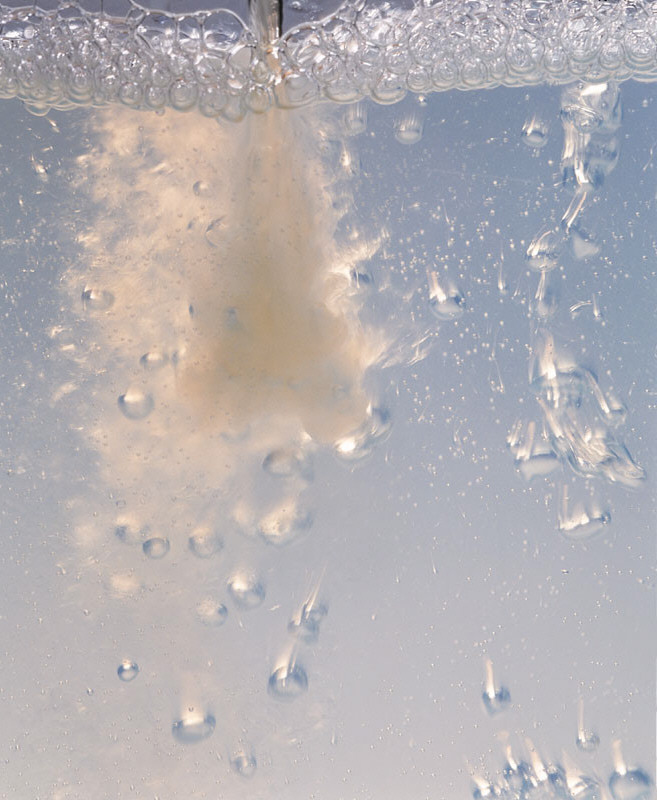The Duty of Defoamers in Enhancing Item Top Quality and Efficiency
Defoamers serve as essential additives that minimize this concern, ensuring smoother production process while boosting the aesthetic and useful qualities of the last items. The selection of the appropriate defoamer can be vital to accomplishing optimum outcomes, elevating important questions about formula compatibility and performance metrics that warrant more expedition.
Recognizing Defoamers
Recognizing the role of defoamers is necessary for keeping item top quality throughout various industries. Defoamers are chemical additives developed to avoid the formation and minimize of foam in fluid systems, which can adversely influence procedures such as mixing, filling, and surface tension. Lathering can bring about ineffectiveness, product problems, and compromised aesthetic appeal, making defoamers an essential part in producing operations.
In industrial applications, defoamers help to enhance item uniformity and stability. In the paint and finishings industry, foam can conflict with the application procedure and the final finish. In food and beverage manufacturing, too much foam can impede bottling and packaging effectiveness. The effective use of defoamers not just ensures smoother manufacturing processes yet likewise adds to exceptional product efficiency.
Additionally, the selection and formula of a defoamer must line up with specific application demands, such as compatibility with other components, effectiveness under varying temperature level and pH conditions, and possible regulative constraints. Eventually, recognizing defoamers' functions and their importance in numerous formulations is vital for optimizing manufacturing and making sure the greatest top quality final result.
Types of Defoamers
Defoamers can be classified right into numerous kinds based on their composition and system of action. The main kinds include silicone-based, non-silicone organic, and not natural defoamers.
Silicone-based defoamers are amongst the most reliable, primarily due to their capability to spread out swiftly on the fluid surface area and interfere with foam formation. Their unique chemical framework allows for premium stability, making them suitable for high-temperature applications and environments with varying pH levels.
Non-silicone organic defoamers, usually composed of fatty acids or all-natural oils, are valued for their biodegradability and lower toxicity. These are normally made use of in food and drink applications where security and ecological effect are extremely important.
Not natural defoamers, which consist of materials like talc or calcium carbonate, act by increasing the thickness of the fluid, thus minimizing foam security. They are usually made use of in commercial processes where compatibility with other materials is not an issue.
Each kind of defoamer has distinctive benefits and constraints, allowing for customized solutions depending on the specific frothing concerns run into in numerous applications. Recognizing these differences is important for optimizing efficiency and accomplishing preferred product top quality.
Applications Throughout Industries
Various markets utilize defoamers to improve product top quality and operational efficiency. In the food and drink market, defoamers are vital in processes such as developing and dairy products production to stop foam development, which can result in inefficiencies and product inconsistency. By regulating foam, makers can ensure far better return and an extra uniform item.
In the pharmaceutical industry, defoamers play a crucial duty in the solution of liquid medicines, where excessive foam can hamper mixing and accurate application. Their usage aids preserve the integrity of the formulations and promotes smoother production procedures.
The paint and coverings industry also counts on defoamers to improve the efficiency of items during application. By minimizing foam, these ingredients guarantee a smoother surface and boost the aesthetic qualities of the last item.

Benefits of Using Defoamers
While the application of defoamers differs throughout sectors, their advantages constantly boost product high quality and process efficiency. One significant benefit is the decrease of foam development throughout making processes, which can otherwise lead to production delays and variances in item high quality. By decreasing foam, defoamers enable a smoother circulation of products, promoting extra effective procedures and lowering the chance of devices malfunctions.
Additionally, using defoamers can enhance the appearance and texture of last items. In markets such as coverings, paints, and food processing, too much foam can endanger the visual aesthetic appeals and overall quality, while the appropriate defoamer application makes certain an uniform finish and preferable attributes. Moreover, defoamers can contribute to set you back savings by lowering waste during manufacturing and optimizing making use of basic materials (defoamers).

Selecting the Right Defoamer
Choosing the ideal defoamer is critical for optimizing manufacturing procedures and making sure product Home Page high quality. The option of defoamer influences not only the efficiency of foam control yet additionally the general efficiency qualities of the final product. Aspects to think about include the sort of application, the chemistry of the formulation, and the ecological problems under which the item will certainly be utilized.
Different sectors might call for details defoamer learn this here now kinds, such as silicone-based, organic, or polymeric defoamers. Comprehending the compatibility of the defoamer with the primary ingredients is vital to prevent unfavorable responses that can jeopardize product integrity. Additionally, the defoamer's performance in different temperatures and pH degrees need to be reviewed to make certain consistent performance.
Evaluating the defoamer in small-scale applications can give valuable understandings into its performance and viability. Factor to consider of regulative conformity, especially in food, drugs, and cosmetics, is extremely important in choosing a defoamer. Ultimately, a thorough evaluation of these factors will bring about the option of a defoamer that not only manages foam effectively however also boosts the quality and performance of the end product.
Final Thought

In conclusion, defoamers are important additives that substantially enhance product quality and efficiency throughout different markets. The calculated choice and application of defoamers lead to cost financial savings, maximized resource use, and raised client contentment.
Lathering can lead to ineffectiveness, product problems, and jeopardized visual allure, making defoamers a critical part in producing procedures.
